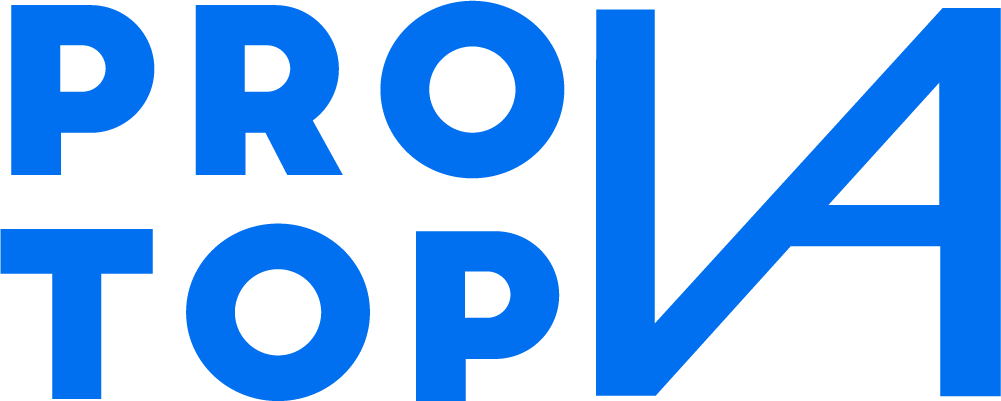When you decide to automate your work, you will only be able to increase your company’s revenues by doing things the right way. You can improve the productivity of your team by implementing some of the tips below to improve the efficiency of your workflow automation strategy.
You automate a lot of complicated processes in your work, but how much do you know about automating your workflows? Implementing techniques that will reduce the workload of your team members and eliminate unnecessary manual tasks and processes is crucial to the success of your business. Here are some Ideas on How to Automate the Workflows in Your Team (OR, How to Improve Processes in Your Team).
Table of Contents
What is Workflow Automation?
Workflow automation is the use of software to automate repetitive tasks and manual processes, freeing up employees to focus on more strategic and value-added work. It can be used to streamline a wide range of business processes, from customer service to sales to marketing.
Workflow automation benefits
Automated Workflow can help businesses and human resources to improve efficiency, accuracy, and productivity, and can also lead to cost savings with minimal human intervention.
These are the main benefits of implementing workflow automation in your entire business process.
- Improved efficiency: Workflow automation can help businesses streamline their operations by automating repetitive tasks and processes. This can free up employees to focus on more strategic and value-added work, and can lead to faster turnaround times and better customer service.
- Increased accuracy: Workflow automation can help businesses improve the accuracy of their work by reducing the risk of human error. This is especially important for businesses that handle sensitive data, such as financial institutions and healthcare providers.
- Enhanced productivity: Workflow automation can help businesses improve their productivity by automating tasks that would otherwise be done manually. This can free up employees to focus on more important work, and can lead to increased output and revenue.
- Reduced costs: Thes could be the most important benefit from workflow automation, Workflow automation can help businesses reduce their costs by eliminating the need for manual labor. This can lead to lower overhead costs and increased profits.
How you can automate your team’s work to help them be more efficient and productive.
Implementing Workflow Automation is Vital for Organizational Success. If you are not convinced to automate your work processes, just look at some of the key facts from Cognizant’s business process automation study from last year. 20% of organizations who use process automation report at least 15% cost savings.
Here are some tips to help you get started. Half of organizations that start using automation techniques see significant improvements in their business workflow and systems within 3-5 years. Automation won’t guarantee instant success, but it will improve your company’s business operations over time and lead to increased profits.
Some tips to create an outstanding workflow automation strategy.
1. Find Your Company’s Greatest Business & Management Challenges.
Before you start planning a new process automation strategy, take some time to determine if you actually need one. What you come up with must help you solve organizational problems. First, analyze the current teams and systems in your organization. What are the problems with your current systems?
Are you finding that there are a lot of mistakes or delays in a project you are working on? Is communication among your team members confusing? How successful are your team members? What tasks do they complete each day? Are your costs too high? Do you need to hire more staff, or are you losing them? You will be able to answer questions like these when you are analyzing your current process and identify your most significant business challenges.
You should figure out how automation will solve these problems. Start with 1-3 business challenges that you need to resolve to make sure that your new workflow automation strategy is manageable. You can implement more automation later on, when you and your team get used to using new workflow software.
2. Set Measurable Goals.
You should have measurable goals in mind when you start setting up automation processes. Once you’ve identified the most harmful team members, it’s time to set realistic goals to drive automation. Will automation help you reduce costs, or improve communication between departments? Would you like to automate workflows to reduce errors in your code, improve team communication, or meet your deadlines?
The trick is to set goals that are specific, measurable, and attainable; this is the only way to know if your strategy is successful or if it needs adjustments.
You want to give accurate information to everyone in your organization. If you want to meet certain deadlines, you can achieve this by automating the delivery of some of your information to your team members as quickly as possible. When people receive emails via email, you can ensure that those communications are delivered quickly by automating the delivery of a text message to notify recipients that a new message has been sent.
When you write out a goal like that, you can easily be specific. It will be easier to say things like to ensure that I meet deadlines. It’s easier to say, our goal is to improve the number of deadlines that are met by 20%. When you monitor and analyze the success of your automation strategy, real numbers will help you determine whether the new system is working.
3. Use workflow automation tools that you can trust.
When choosing tools to streamline your workflows, don’t buy the piece of software just because it is the first one you came across. You need to pay attention to reviews and investigate different solutions.
Capterra can help you identify the right workflow management and automation software by separating the products into categories like user authorization, approval process management, compliance management, custom dashboards to manual data entry, and more. Use their advanced search feature to quickly find what you are looking for.
4. Monitor Your New Systems
Once you choose the automation solution, monitor your efforts. Most business platforms include reporting dashboards that you can use to see data entry see what’s happening behind the scenes. Keep track of the numbers and see if you need to make any improvements.
- Common Workflow Automation Problems to Watch for. When you come into the automation process, you may be thinking that everything will be smooth-sailing. Unfortunately, this isn’t always the case. You’ll have to work out a lot of kinks before you can fully utilize the system. Here are some common pitfalls with a workflow automation system to be aware of.
- Over-complication – the point of automation is to make workflow easier, simpler. If your workflow automation tool or strategy requires too many steps, it’s not going to work as expected. Simplify the process at every step. Missing critical elements – discuss internal expectations and compare them with your new system to see if your strategy has all necessary elements. Difficult to understand from an outsider perspective – an internal team who’s working with that workflows from the beginning may be okay with that way of doing things. However, remember that you may need to bring someone new to the team at some point, and those people need a fast and clear introduction. So your system should be user-friendly.
- Lack of access to key data – each team member will need to have access to certain information. It’s common for a new automation system to limit access to critical data. Check in with everyone to ensure that they are able to see everything they need to complete their tasks.
5. Delegate things to a Manager
Each new system within of your team needs an in-charge person. These people assume the role of project managers, and will be mainly in charge delegate and automate tasks.
Here is where is strategically efficient to hire a Virtual Assistant with ProtopVA to delegate these tasks so that your projects are overseen.
If your new system is outside the scope of your existing team, it can be a good idea to bring on someone new. If you don’t think it’s a good idea to bring on a new, full-time employee, check out contractors or freelancers that have expertise with the software solutions you and your team lack experience with.
Sometimes a fresh set of eyes can expose and remedy critical issues that would otherwise go unnoticed.
Top 5 workflow automation software.
When searching for a software automation tool, it’s important to consider your specific goals, team size, current processes, and compatibility with existing tools. Start by discussing your goals with your team and asking for their input on the best tools for specific tasks.
Also, you must check if there are any existing software solutions that offer integration options, which can be found on the provider’s website or through third-party integration tools.
A workflow management software can help businesses streamline their operations, improve operational efficiency, and save time and money. There are many different workflow automation software options available, so it is important to choose one that is right for your specific needs. Below you will find our top 5 best workflow automation software.
- Zapier is a no-code automation platform that connects over 5,000 external apps. It allows users to automate repeatable tasks between apps, such as sending an email when a new lead is generated in Salesforce or creating a new task in Trello when a new ticket is submitted in Zendesk. Zapier is a great option for businesses of all sizes and is easy to use, even for users with no technical experience.
- Monday.com is a cloud-based project management platform that offers a wide range of features, including workflow automation. Monday.com is easy to use, thanks to its intuitive interface, and can be customized to meet the needs of any business.
- ClickUpis another cloud-based project management platform that offers workflow automation. ClickUp is known for its flexibility and its ability to integrate with other software applications.
- Integrify is a workflow automation software that is designed for businesses of all sizes. Integrify offers a wide range of features, including drag-and-drop workflow design, conditional logic, and reporting.
- Jira Software is a project management software that is specifically designed for agile teams. Jira Software offers features to automate processes that can help teams to streamline their processes and improve their efficiency.
In Conclusion
Use these tips to improve team productivity in your automated workflows. Automation can increase revenue if you implement your system the right way. First, identify your greatest challenges. Next, set measurable goals. Then, choose the right workflow automation solution and monitor changes to your systems.
FAQ on Workflow Automation
What is workflow automation?
What are the benefits of workflow automation?
Increased efficiency: Workflow automation can help to streamline processes and eliminate manual tasks, which can save time and money.
Improved accuracy: By automating tasks, there is less room for human error.
Increased productivity: Employees can focus on more strategic and creative work when they are not bogged down in repetitive tasks.
Improved customer service: Workflow automation can help to improve customer service by providing a faster and more efficient response to customer inquiries.
How do I get started with workflow automation?
Once you have selected the right software, you can begin to automate your tasks. This process can be complex, so it is important to have a plan in place and to work with a qualified consultant if necessary.



